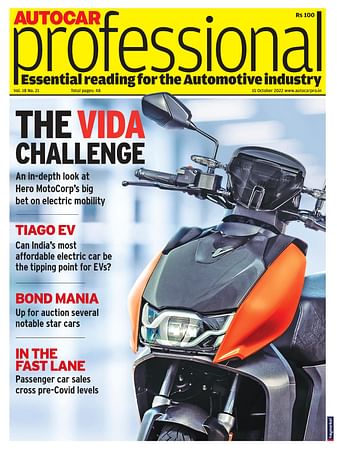IIT Hyderabad researchers develop low-cost dual carbon battery as potential li-ion tech alternative
The study predicts that the new battery chemistry can bring down the overall battery cost by 20-25 percent.
Researchers from the Electrochemical Energy Storage (EES) Lab at IIT Hyderabad, under the supervision of Dr. Surendra Kumar Martha, Associate Professor, Department of Chemistry have developed a 5V Dual Carbon battery utilising self-standing carbon fibre mats as both electrodes (cathode and anode).
The research was carried out by Shuvajit Ghosh and Udita Bhattacharjee, PhD students at IIT Hyderabad, under the supervision of Dr. Surendra K. Martha, in collaboration with Oak Ridge National Laboratory (USA) and Naval Materials Research Laboratory (Mumbai, India). Naval Research Board (DRDO) supported this project.
The low-cost sustainable battery is said to be a potential alternative to the lithium-ion battery. The new model sets aside the requirement of toxic, costly, and heavy transitional metals. Energy economy based on renewable sources has been put forward as a way out to shrug off the dependence on fossil fuel.
The research states that rechargeable lithium-ion batteries are projected to meet future electric mobility, electric aviation, and stationary grid energy storage targets within 2030. However, they need toxic and costly metals like cobalt, nickel and manganese, among others for functioning. In addition, the geologically unsymmetrical distribution of lithium and cobalt along with geopolitics and unethical child-labour centered on mining, causes havoc fluctuations in raw material cost. It affects the market price stability of large lithium-ion battery packs used in electric vehicles.
In the dual-carbon battery, both the electrodes consist of carbonaceous materials, and the ions from the electrolyte intercalate and de-intercalate into the electrode matrix.
The novel dual carbon battery consisting of zero transition metal is environmentally benign. The study predicts that it may cut down the overall battery cost by 20-25 percent and is expected to curb the unpredictability in market price. The use of ubiquitous carbon as electrode active material as well as current collector replacing heavy metals brings in the aspects of lightness and flexibility. The fabricated 5.0 voltage (nominal voltage 4.6 V) cell provides an energy density of 100-watt hour per kilogram approximately and can be extended up to 150-watt hour per kilogram with further modifications.
The research team believes that developed cells may find potential uses in high-voltage applications, sophisticated battery-run medical devices, regenerative braking systems in electric vehicles, and stationary grids.
Dr. Surendra Kumar Martha, said, “The study will be extrapolated to push the energy density limits further, and their broad vision includes introducing the dual carbon system as a cheaper LIB alternative to the Indian market.”
RELATED ARTICLES
Maruti's Kharkhoda Plant construction in full swing
Maruti Suzuki has proposed to spend more than Rs 7,000 crore for the construction and commissioning of this plant which ...
July 2024 From R&D incentives to EV infrastructure: What auto components industry expects from Budget 2024
July 2024 From R&D incentives to EV infrastructure: What auto components industry expects from Budget 2024
Vemuri Young Artist from India Recognized as one of the Winners at 16th Global Toyota Dream Car Art Contest
Vemuri Young Artist from India Recognized as one of the Winners at 16th Global Toyota Dream Car Art Contest






 By Autocar Pro News Desk
By Autocar Pro News Desk
 06 Apr 2021
06 Apr 2021
 14925 Views
14925 Views









